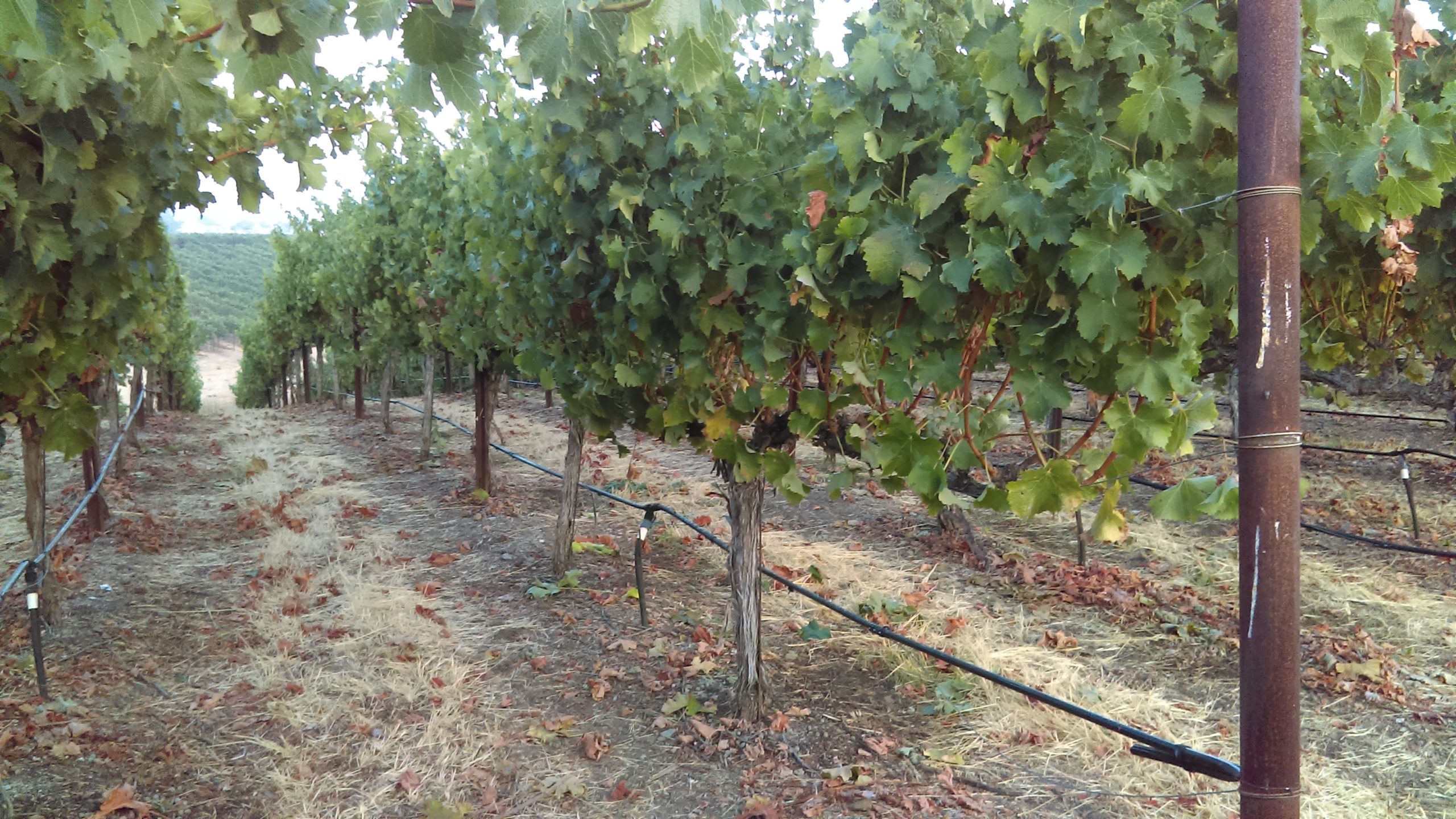Sauvignon Blanc – a Signature Varietal Part 1

This is the first of two blog posts in which I explain the way we harvest and craft a ‘Livermore-Style’ Sauvignon Blanc.
I like to begin my introductory course in winemaking at Las Positas College with a discussion of Sauvignon Blanc. The variety’s complicated chemistry makes it an ideal cultivar for developing an understanding of the effects of terroir, as few grapes reflect the climate so distinctly. There are the obvious grass and tropical notes of the New Zealand (Marlborough) wines and the recognizable notes of boxwood (cat’s urine) with the historic Sauvignon Blanc from the Sancerre.
What causes these noticeable terroir effects in Sauvignon Blanc? Basically, there are two major classes of compounds associated with typical Sauvignon Blanc aroma in the bottled wine: methoxypyrazines and thiols. Methoxypyrazines are responsible for the green, vegetative, and grassy aromas that are characteristic of the variety. Solar luminance, and not temperature, is responsible for removing these molecules during ripening. Therefore, the concentration of methoxypyrazines can be affected to some extent in the vineyard by careful canopy management.
In contrast, thiols are not present in the grape but are, instead, created by the yeast during fermentation. The amounts of the thiol molecules that are present in the fermented wine, and their characteristic aromas, are determined by precursor molecules in the grape. Thiol precursor molecules are very sensitive to the climate and clone. Therefore, it is good to look at both methoxypyrazine and thiol precursors as terroir molecules, although the winemaker can influence their expression within limits through viticultural and winemaking practices.
Of the many thiols present in wine, three have been identified as providing the aromas typical of Sauvignon Blanc. These are 3MH (passion fruit), 3MHA (grapefruit), and 3MMP (boxwood, associated with the smell of cat urine). 3MH and 3MHA are elevated in the Sauvignon Blancs from Marlborough, and 3MMP seems to be more noticeable in the wines of Sancerre.
Determining when to harvest Sauvignon Blanc depends on the winemaker’s style. Personally, I like to preserve a little of the methoxypyrazine, since this is the varietal character of the cultivar – it is what connects me to the lineage of the noble Bordeaux family of Cabernet Franc and Cabernet Sauvignon. As for the thiol-based aroma compounds? There is no way to taste the precursors in the grape, so they aren’t part of the harvest equation. This is why the vineyard and the clone are important, as they determine the ultimate flavor – that is, assuming your winemaking practices are optimized to the terroir.
Methoxypyrazine aside, what I look for in harvest are sugars and acids. These are the important variables in crafting a balanced wine. The sugars are responsible for the body and alcoholic sweetness that must be counter balanced by the acids. I like to see sugars around 22-23o Brix, with acids around 7 – 7.5 grams per liter (depending on Brix). Under these conditions, we can craft a Sauvignon Blanc to the Occasio style with little or no intervention.
It is important not to confuse style with fashion. Today, fashion favors the green and tropical style synonymous with New Zealand’s Marlborough region. Yet, among Europhiles, the mineral-laced, grassy, and often austere character associated with France’s Sancerre remains the gold standard. So, where does Livermore Valley fit between these extremes?
Livermore Valley, historically, has produced Sauvignon Blanc that lies between the French and New Zealand styles. Early Livermore wines were a touch grassy (but not too much) with a spectrum of citrus fruits supported by tropical and stone fruits. And, in the best years, a vein of minerality would tie the whole package together. These are the flavor elements that we seek in our Sauvignon Blanc, a recapturing of this classic Livermore style for which we were once so famous.
Achieving this historic ‘Livermore’ style is not for the faint hearted. It requires care and skill from the growers and the winemaking team. To begin with, we won’t add sulfites at crush. Not because we eschew the use of sulfites, but because we believe that at this stage sulfites interfere with the expression of the Livermore terroir. The conscious decision to refrain from sulfites imposes strict handling procedures for the fruit, from night time harvest, daybreak delivery, and in-house processing. I will be explaining the details in my next blog post. In the meantime, I invite you to watch the brief video we put together showing the 2017 harvest of our Ghielmetti Sauvignon Blanc.


